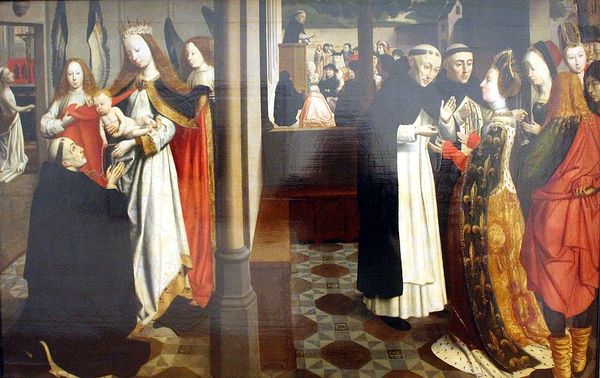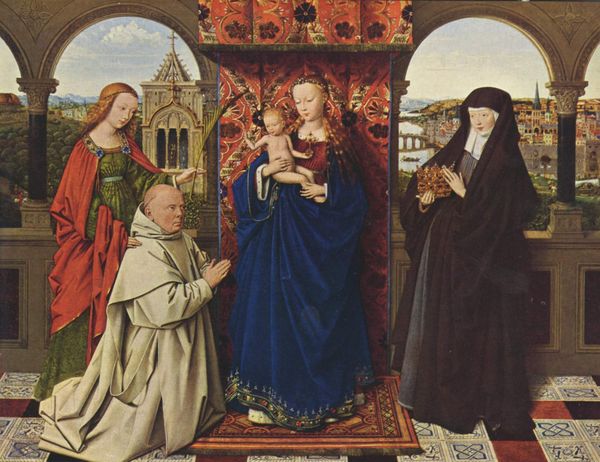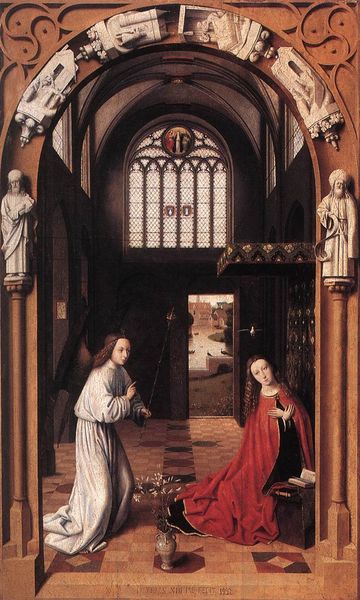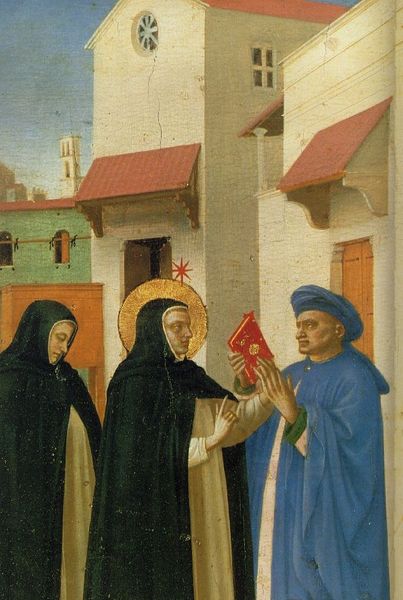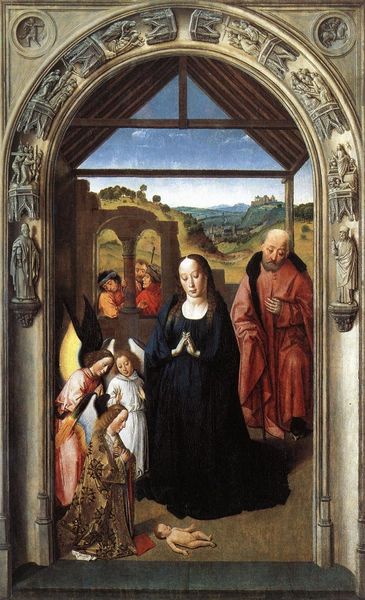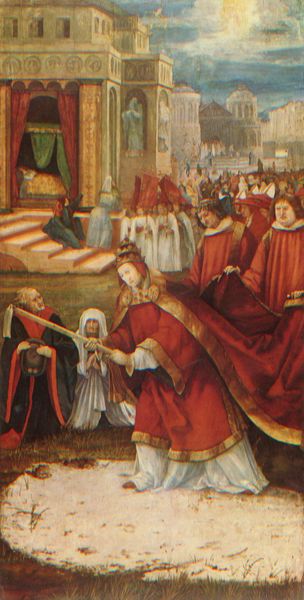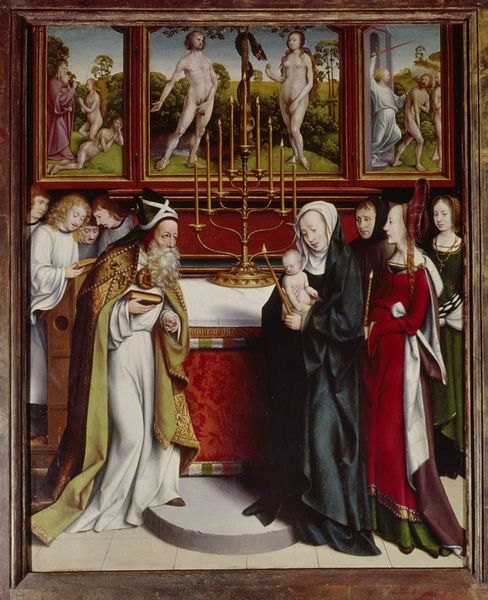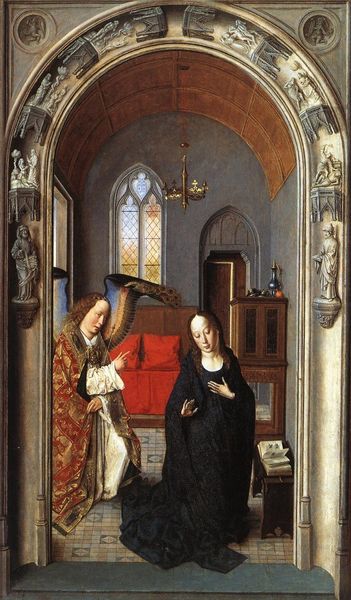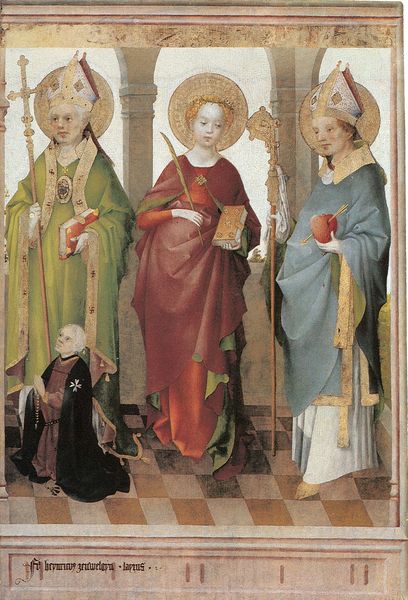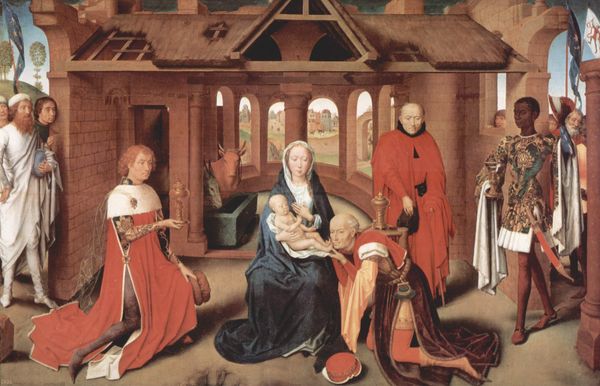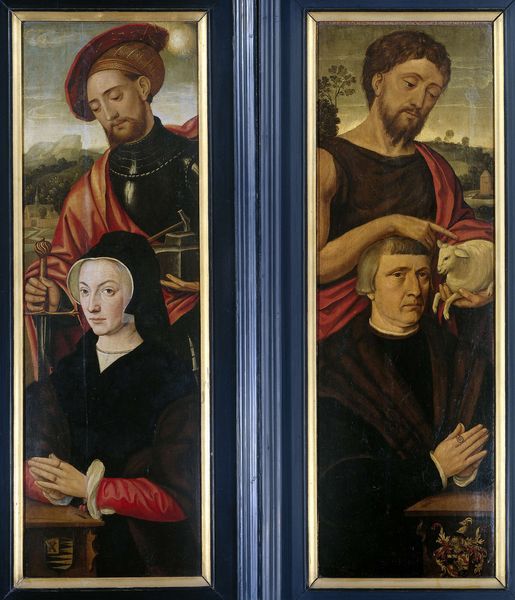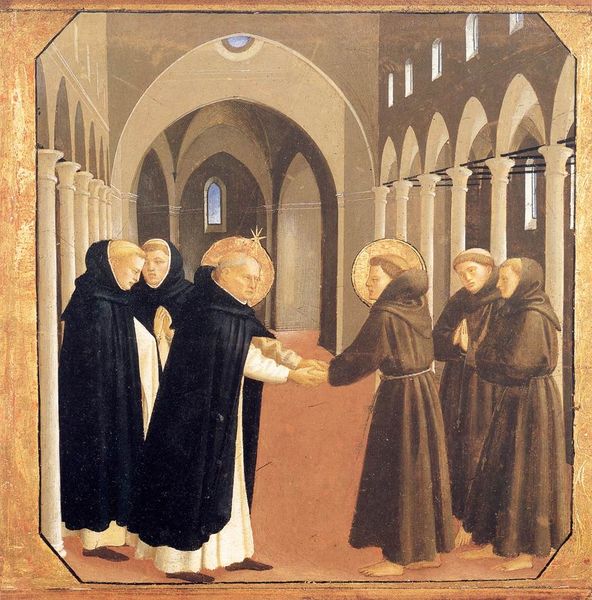
Donor with St. Nicholas and his Wife with St. Godelina
0:00
0:00
janprovoost
Groeningemuseum, Bruges, Belgium
#
possibly oil pastel
#
handmade artwork painting
#
oil painting
#
coffee painting
#
underpainting
#
christianity
#
watercolour illustration
#
surrealist
#
portrait art
#
watercolor
#
fine art portrait
#
christ
Dimensions: 120 x 79 cm
Copyright: Public domain
Editor: Here we have a diptych, "Donor with St. Nicholas and his Wife with St. Godelina", by Jan Provoost. The portraits are very formal, and the figures seem to exist in different spaces. What do you see in this piece, particularly the spatial separation? Curator: This spatial disconnect speaks volumes. Look closely – the donors are positioned with their patron saints, yes, but set against distinct backgrounds representing their earthly and spiritual lives. We see how class and gender affected a patron’s identity within the religious sphere. Editor: Class and gender? I was focused on the religious aspect of patronage. Curator: Precisely! These works weren’t *just* acts of piety; they were carefully constructed displays of social standing. Notice how the women are literally further away. Consider too, Saint Nicholas with the man, positioned prominently within what seems to be Bruges, signaling wealth tied to the city's economy, while Saint Godelina is situated within the court, gesturing towards dynasty and generational wealth for the woman. Doesn't it suggest the complex intersections of identity and power within their historical context? Editor: That makes sense. So the diptych is a commentary on social structures through these devotional images? Curator: In a way, yes. It reveals the entanglement of personal devotion with the performance of social roles, especially as informed by wealth and religion, and of course gender. The physical separation isn't just aesthetic; it is symbolic, underlining how society perceived, and perhaps confined, individuals within strict categories. How does the city further play into the social display of wealth? Editor: Seeing the image through that lens makes me reconsider everything, as it underscores not only the religious identities of these individuals but also their identities as subjects within society. Curator: Exactly, it demonstrates how visual representation served as a means to perpetuate – or perhaps, subtly question – the existing social order. Understanding these images opens a broader inquiry into who gets to be seen and how they are remembered, or even controlled.
Comments
No comments
Be the first to comment and join the conversation on the ultimate creative platform.
